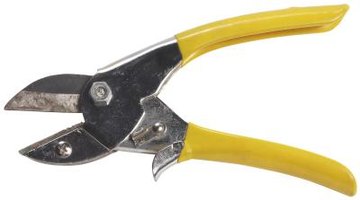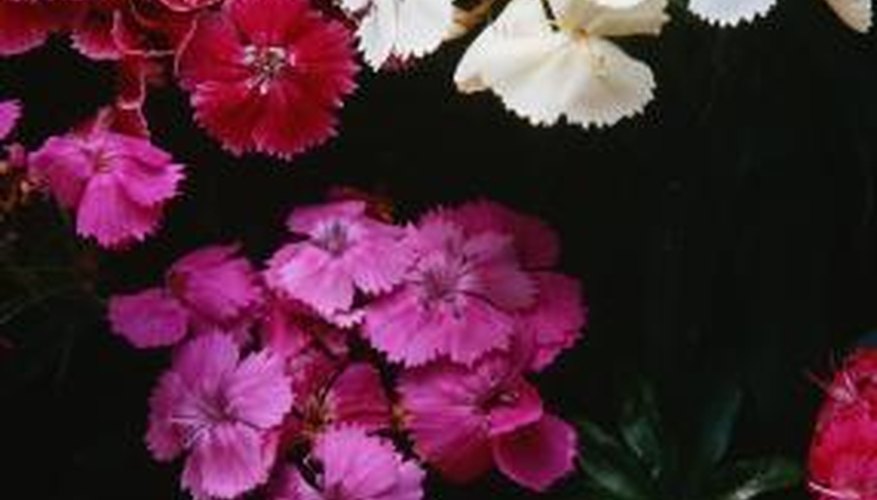A member of the carnation family, dianthus looks and often smells like a miniature carnation plant. Also known as Sweet William or Pinks, dianthus blooms in a variety of colours, including white, pink, red, rose, lavender and yellow. Varieties range from 6 inches to 3 feet tall, growing in clumps and producing slender, finger-like leaves of bright to grey-green on numerous stems. Blooming from early summer through fall, dianthus make lovely cut flower arrangements. Some dianthus are annual, some biennial and others perennial. Keep plants blooming by pruning and removing spent flowers.

Use sharp pruning shears or scissors to cut off, or deadhead, wilting and dead blooms. This prevents the plant from diverting energy into creating a seedpod at the flower base instead of spending energy to create new flowers. Since dianthus blooms cap long stems, remove spent blooms by cutting off the entire stem close to the plant base. This encourages new flowering stem growth.
- A member of the carnation family, dianthus looks and often smells like a miniature carnation plant.
- Since dianthus blooms cap long stems, remove spent blooms by cutting off the entire stem close to the plant base.
Trim stems at the centre of the plant to encourage bushier growth. Dianthus tends to produce numerous leaf-filled stems, not all of which produce flowers. Remove only about one-third of the centre growth of this type. Also, snip off the growing tips of tall leafy stems to promote branching. As new growths emerge, new blooms will appear.
Shape straggly dianthus plants by removing outside stems at the plant base or by cutting half the stem to encourage branching in an oval or round shape. Especially on taller varieties of dianthus, this form of trimming keeps the plant neater and less wild-looking. It also promotes branching, along with new bloom production.
- Trim stems at the centre of the plant to encourage bushier growth.
- Especially on taller varieties of dianthus, this form of trimming keeps the plant neater and less wild-looking.
TIP
Stay ahead of deadheading by cutting dianthus flowers in full bloom to fill indoor vases with lovely arrangements. To further encourage new blooms, fertilise after deadheading and pruning, using a water-soluble plant food and following package directions for solution strength.
WARNING
Avoid cutting too much of the plant while pruning, especially at the crown or centre. Too-heavy pruning can shock plants and cause decline or death.
